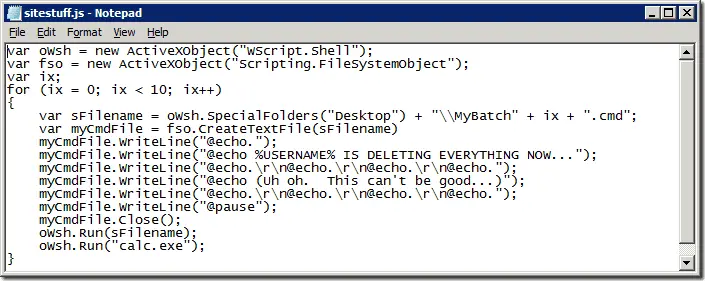Definition of Active Scripting, also known as ActiveX Scripting.
Active Scripting is the process of using a scripting language such as Microsoft Visual Basic Scripting Edition (VBScript) or Microsoft JScript to drive Component Object Model (COM) components. Host applications such as Microsoft Internet Information Services (IIS) with Microsoft Active Server Pages (ASP) and Microsoft Internet Explorer have scripting engines for running scripts written in VBScript or JScript.

Active scripting engines can be developed for other interpretive scripting languages, such as Perl, to leverage a developer’s existing knowledge of these programming platforms. Scripting engines for client software, such as Internet Explorer, are specially designed to eliminate the authoring components that are not needed in a nonauthoring host environment. This makes the client-side scripting engine lightweight, which yields better performance.
How it works
In a typical scenario, the host application loads the script document and calls an application programming interface (API) to create a new instance of a scripting engine. The host application feeds the script to the engine and executes the script.
Current Status
Active scripting is regarded as complete, and no longer under active development by Microsoft. However, the technology is still being supported by Microsoft’s Sustaining Engineering Team, which is responsible for bug fixes and security enhancements. Furthermore, scripting engines will continue to be shipped with future releases of Microsoft Windows and IIS.
Originally, the .NET Framework had a scripting technology of its own and a separate scripting IDE called Visual Studio for Applications (VSA), and the interfaces to the technology were also available via Active Scripting, allowing even .NET-unaware applications to be scripted using .NET languages. VSA was also meant to replace Visual Basic for Applications. However, that entire technology was deprecated in version 2.0 of the .NET Framework, leaving no clear upgrade path for applications desiring Active Scripting support (although “scripts” can be created in C#, VBScript, Visual Basic .NET, and other .NET languages, which can be compiled and executed at run-time via libraries installed as part of the standard .NET runtime).
Microsoft has also introduced Windows PowerShell, which can expose applications via PowerShell cmdlets or PowerShell providers.